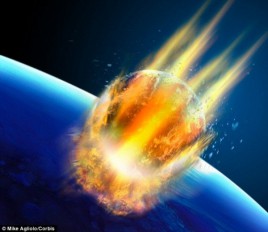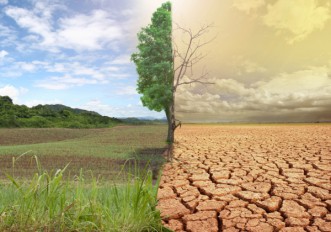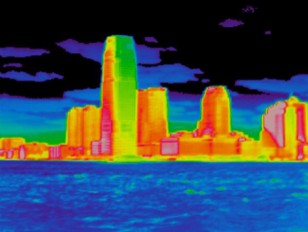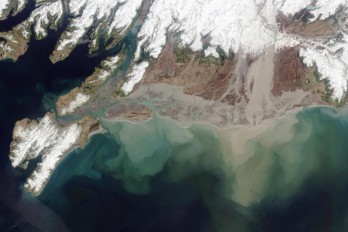Human activity causes climate to change 170 times faster than natural forces

Researchers determined our impact on Earth via the “Anthropocene Equation”
Researchers determined our impact on Earth via the “Anthropocene Equation”
Even though astronomical and geophysical factors have been the dominating influences on our planet’s system for the past 4.5 billion years, it seems that humanity is now a prime driver of its change. This new geological period in which human activity profoundly shapes the environment is often described as the Anthropocene and researchers have even developed a mathematic equation to describe its effects. According to the so-called ‘Anthropocene equation’, our intense activity on earth causes climate to change 170 times faster than in the past, and in the opposite direction! The equation, published in the journal ‘The Anthropocene Review’, was developed by Owen Gaffney, analyst at Stockholm Resilience Centre and Future Earth and Professor Will Steffen, climate change expert at the Australian National University.
According to Gaffney, they developed the equation “by homing in on the rate of change of Earth’s life support system: the atmosphere, oceans, forests and wetlands, waterways and ice sheets and fabulous diversity of life”. “For four billion years the rate of change of the Earth system has been a complex function of astronomical and geophysical forces plus internal dynamics: Earth’s orbit around the sun, gravitational interactions with other planets, the sun’s heat output, colliding continents, volcanoes and evolution, among others,” he wrote. That rate of change has lately changed dramatically, with global temperature being until recently in decrease at a rate of 0.01 °C per century while the current rate (last 45 years) is a rise of 1.7 °C per century. Indicatively, the warmest 12 years since records began have occurred since 1998.
The “Anthropocene Equation”
Τhe rate of change of the Earth system (E) has in the past been a function of astronomical (A) and geophysical (G) forces plus internal dynamics (I). However, lately the effect of industrialized societies (H) has become disproportionally large. This new trend is depicted in the anthropocene equation:

The analysts suggest that the rate of change of the Earth system over the last 40 to 50 years is purely a function of industrialized societies.
“In the equation, astronomical and geophysical forces tend to zero because of their slow nature or rarity, as do internal dynamics, for now. All these forces still exert pressure, but currently on orders of magnitude less than human impact. We are not saying the astronomical forces of our solar system or geological processes have disappeared, but in terms of their impact in such a short period of time they are now negligible compared with our own influence,” Steffen said.
Want to read more like this story?

The Conversion Of Earth Into...Spa!!
May, 27, 2015 | NewsA research of Stanford University in the US brings a phenomenon out into the open!! According to...

The Earth Is Still Too Hot!
Jun, 08, 2015 | NewsDespite the widespread impression that in recent years there has been some respite and slowdown in c...

Climate change could cause over 500,000 extra deaths in 2050
Apr, 04, 2016 | NewsHealth impacts due to changes in agricultural production are currently examined Health impacts du...

The 'urban heat island' effect could force several major cities to face climate change costs at least twice as big as the rest of the world
Oct, 10, 2017 | NewsSome of the world’s largest cities could face temperatures up to 8°C higher than those of...

In less than 8 months, humanity exhausted Earth's budget for 2016
Aug, 11, 2016 | NewsAt this rate, we need the resources of 1.6 planets! At this rate, we need the resources of 1.6 pl...

How climate change has affected real estate business
Nov, 11, 2019 | NewsClimate change is a phenomenon that leads to sea water-level rise affecting the coastal areas. But h...

Horror Scenario For Coastal Areas
Jul, 29, 2015 | NewsClear warning from scientists, who note that the sea level rise may not be avoided even if the gover...

Study: Ice Age Cycles Had Little Impact on Global Weathering Rates
Jun, 10, 2015 | NewsA team of researchers from Stanford University and Germany’s GFZ Research Center for Geoscienc...

Calculation Example – Internal forces.
Jul, 20, 2017 | NewsDetermine the internal forces at point C. Determine the internal forces at point C. Read more
Trending

Vertical gardens in Mexico City to combat pollution

Characteristics of Load Bearing Masonry Construction

Taipei 101’s impressive tuned mass damper

Saudi Park Closed After 360 Big Pendulum Ride Crashes to Ground, 23 injured

Dutch greenhouses have revolutionized modern farming

Federal court rules Biden’s offshore drilling ban unlawful


